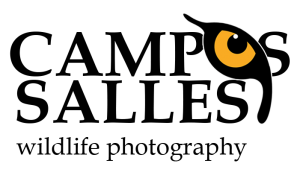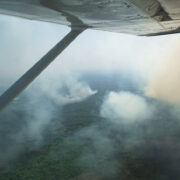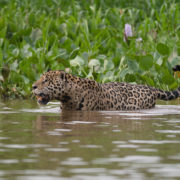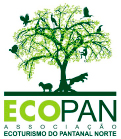About the fires in the Pantanal
I’m sure you’ve heard in the media that the Pantanal is burning, animals are dying and so on. Every year during the dry season some parts of the Pantanal burn, it’s a normal occurence. Some years are drier and thus the fires are larger and more widespread, in other years they are restricted to small areas. This year has been very dry, with fires even during the wet season here and there. Now, at the peak of the dry season, the fires seem to be everywhere and sensationalistic media and fake news makes it believe that it’s consuming the entire Pantanal. That’s not true. Yes the fires are bad and worst than other years for a number of reasons I will cover on this long post, but fires of this magnitude are not totally new to the Pantanal. Old locals mention a worst one in 1967, on an exceptionally dry year. This year’s fires are consuming significant areas and surely killing a huge number of small animals and some larger animals too, like Tapirs, Deers and even Jaguars. But it’s not consuming the entire Pantanal, not even close to that as you can see on the satellite images below.

The map above depicts the situation of a few days ago (Sept. 14th). I’ve added the information of where North and South Pantanal are. As you can see there are relatively few fire spots in South Pantanal, but many more in the North. Last year was the inverse situation.

Now we zoom in to North Pantanal, at the area North of Porto Jofre, where we do most of our Jaguar observations. I have added a few annotations that people who have been there will surely recognize the names. The blue area indicates roughly where most Jaguars are seen. We can notice that the fires are right now mostly consuming an area West and North of it, although truth be told it has burned significant areas inside the blue area a few days ago as well. Mostly it burned low vegetation that recovers very quickly.
What started the fires? Almost all of the fires during the dry season are started by men, intentionally or not. Very few fires, mostly at the end of the dry season, are started naturally by lighting strikes, but those are often short-lived due to the incoming rains. So, if they started by men, who did it? And why? That’s the big question, surely some of the fires were started by ranchers wanting to increase their pastureland, an illegal practice but with little government enforcement (maybe even with a bit of indirect incentives by recent loosening of fiscalizations?). These fires may actually have started far away from the region as well, and carried on along the level terrain by the strong winds common at this time of the year. Some other fires may have started by accident/carelessness on camp fires or even by cigarette butts. Another hypothesis is that some fires were intentionally started by individuals with political reasons. This is a controversial hypothesis but one that must be considered in present times. There are reports from various sources of wooden bridges along the Transpantaneira burning out of nowhere, when no areas near it were burning at all, and those fires eventually spread to the surrounding vegetation.
Anyway, what can be done now? Frankly, not much. A lot of brave people are volunteering and I specially thank those that are comitted to save the bridges that give us access to Porto Jofre and the veterinarians and sanctuaries that are receiving and taking care of the animals in trouble. The fires themselves are very difficult if not impossible to stop as they are often in areas very far from roads or any other means of access, with dense brushy vegetation and they spread to new areas ahead very fast due to the winds. The government is there now with people and equipment, but they too don’t have the means to stop those fires either. I don’t think anyone has. The private sector, namely associations, lodge owners and guides are also working and getting equipment, with the important help of donations from individuals around the world. We are specially thankful to you. But in truth much is done before the fires even start, as a precaution.
Talking about precaution, one factor may have aggravated the situation. In the past the Pantanal used to receive a bit more scattered rains during the dry season, but now this is not happening at the same frequency due to the deforestation of the habitats surrounding the Pantanal, namely the Cerrado and the southern borders of Amazonia. Now people and cattle has been present in the Pantanal for centuries. In this new ecological reality the cattle had an important function (despite impacts I won’t cover here), of consuming excess dry vegetation growth from pastureland. However in the past decades with more competitive markets the cattle is slowly receding from the Pantanal towards more lucrative areas outside of it, so there’s fewer cattle to consume the accumulation of dry vegetation, this allied with drier weather conditions and human activity, is a time bomb waiting to be ignited.
What precautionary measures we can take to avoid such fires in the future? The formation of permanent fire brigades in North and South Pantanal, with constant work inside farms and nature reserves to strategically create firebreaks and the augmentation of fiscalization against illegal fires. Brazil has the satellite technology to do this fiscalization, it’s a matter of really enforcing it and for this I think international pressure is important. Another important precautionary measure is tourism, it’s not a coincidence that the worst fire in many decades happened exactly in a year without tourism in North Pantanal due to Covid-19. Your travel to the Pantanal directly helps conserve the habitat and the wildlife in it.
We can learn a lot with this year’s terrible fires though. First, that the Pantanal regenerates very quickly. In a few days we should start to see the first rain showers of the incoming wet season and that should put down most of the fires. We know by past experience that the Pantanal is quite resilient to fires and by next year things should be green and vibrant again. In fact the low vegetation areas should be even prettier.
It’s a sad year in many aspects for the Pantanal, but it’s not the end of it. We are receiving daily reports of multiple Jaguar encounters along the rivers, including cubs. Nature is resilient and will survive this. Humanity always learn from mistakes, I’m positive that this years events will change for the good side a lot of things and, hopefully, we will be able to avoid such disasters in the future.







